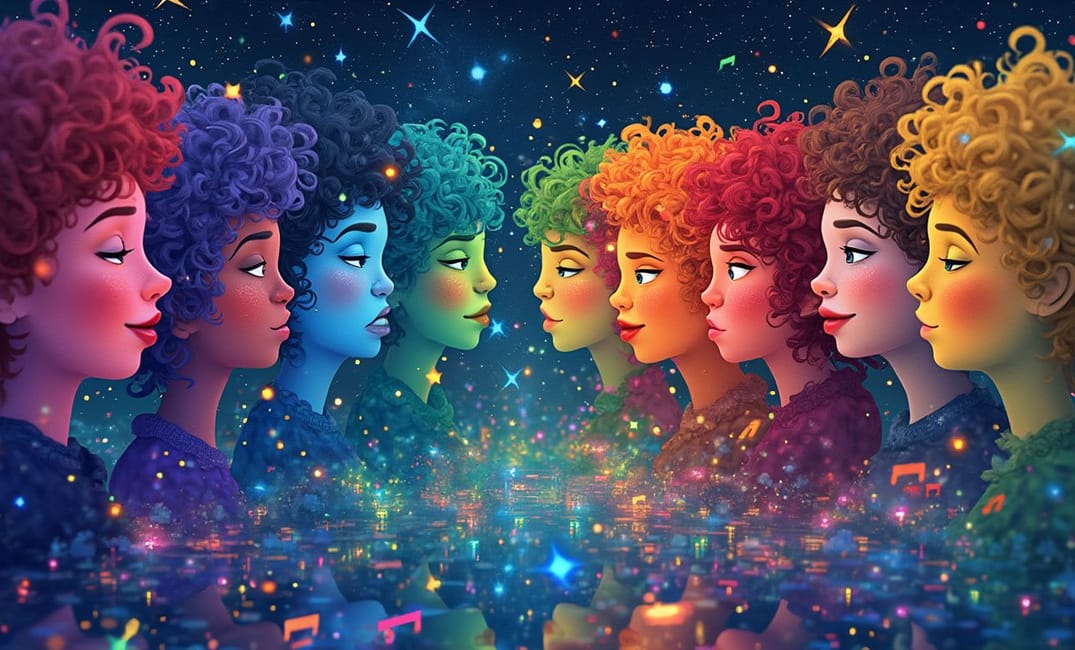Introduction: The Melody of Human Emotion
Human emotion is an intricate symphony, a dynamic interplay of sensations that shape our thoughts, actions, and interactions. Emotions provide the color to the black-and-white nature of existence, driving us toward love, hate, fear, joy, sorrow, and every nuance in between. This entry explores the complex dimensions of human emotions, their physiological underpinnings, their influence on culture and society, and their profound role in art and literature.
The Biological Orchestra: Foundations of Emotion
Neurochemical Symphony
- The Brain's Emotional Regions: The limbic system is the brain's emotional hub, comprising areas like the amygdala, hippocampus, and prefrontal cortex. These regions coordinate to assess, interpret, and react to emotional stimuli, crafting appropriate responses while embedding emotional experiences into memory.
- Neurotransmitter Dynamics: Neurotransmitters like serotonin, dopamine, and oxytocin serve as emotional conductors. Serotonin, often linked to mood stabilization, dopamine associated with pleasure and reward, and oxytocin's role in bonding and nurturing create a complex biochemical dance that influences mood and behavior.
Hormonal Influence
- Adrenals and Stress Response: Hormonal pathways, involving cortisol and adrenaline, trigger the body’s fight-or-flight response. This reaction enables survival through rapid, emotion-driven decision-making, yet prolonged exposure can lead to stress-related conditions affecting mental and physical health.
- Endorphins and Well-being: Endorphins, natural painkillers produced during exercise or laughter, promote feelings of euphoria and tranquility, highlighting the body's intrinsic capacity to modulate emotional states through physical activity and social interaction.
Cultural Expressions: Emotion Across Societies
Cultural Perceptions and Emotional Contexts
- Emotion in Language: Different cultures articulate emotions uniquely through language. For example, the concept of “Schadenfreude” in German denotes deriving pleasure from another's misfortune, illustrating how linguistic subtleties capture cultural emotional nuances.
- Cultural Determinism and Emotional Norms: Societal norms dictate emotional expression, with some cultures emphasizing stoicism, while others encourage emotional openness. The Japanese concept of "Honne" (true feelings) versus "Tatemae" (public facade) exemplifies the nuanced cultural approach to emotional presentation.
Artistic Expression and Emotional Reflection
Art as an Emotional Lens
- Music: The Universal Language: Music elicits a profound emotional response, capable of evoking memories, dreams, and cathartic feelings. Composers like Beethoven and Tchaikovsky imbued their symphonies with raw emotion, creating timeless pieces that transcend cultural boundaries and resonate universally.
- Visual Arts and Symbolism: Artists have harnessed visual mediums to explore the spectrum of human emotions, using color, form, and composition to evoke specific sentiments. The surrealism of Salvador Dalí or the abstract expressionism of Mark Rothko represents emotion's boundless canvass, brilliant yet enigmatic.
Literature and Emotional Exploration
- Character-Driven Narratives: Literature offers an intimate window into the human psyche, capturing the complexity of emotions through its characters. From Shakespearean tragedy to modern psychological novels, emotions drive plots and character development, reflecting universal human experiences across generations.
- Poetry and Emotional Economy: Through brevity and metaphor, poetry encapsulates intense emotions, echoing universal truths in finely crafted verses. Poets like Langston Hughes and Emily Dickinson masterfully translate visceral emotions into lyrical reflections that resonate across emotions and cultures.
Emotions and Human Relationships
Bonds that Define Us
- Emotions in Social Interactions: Emotions function as the bedrock of human relationships, guiding social interactions, fostering empathy, compassion, and understanding. Love, friendship, and family bonds rely heavily on emotional intelligence and the capacity to share and understand feelings.
- Conflict and Harmony: Emotional intelligence plays a pivotal role in resolving conflicts, necessitating the ability to navigate emotions constructively. Skills like empathy, active listening, and emotional regulation are essential for fostering harmony and reducing interpersonal tensions.
Emotions in Leadership and Decision-Making
- Emotional Intelligence in Leadership: Emotional intelligence transcends traditional leadership skills, emphasizing self-awareness, self-regulation, motivation, empathy, and social skills as keys to effective leadership and team cohesion in various social and organizational contexts.
- Decision-Making and Emotional Bias: Emotions can influence decision-making processes, sometimes leading to biases or misjudgments. However, integrating emotional insights alongside rational evaluations can enhance decision-making, highlighting the importance of balanced emotional awareness.
Emotions in the Digital Era
Emotions and Technology
- Digital Communication and Emotional Impact: The advent of digital communication reshapes emotional expression through emojis, social media, and virtual interactions. While these platforms enhance connectivity, they also challenge traditional emotional nuance and authenticity.
- Technological Innovation and Emotional Well-being: Emerging technologies, including virtual reality, offer innovative channels for emotional exploration and therapeutic interventions, potentially reshaping mental health treatment and enhancing emotional resilience.
Emotions and Artificial Intelligence
- AI and Emotional Recognition: Developments in artificial intelligence aspire to interpret and respond to human emotions, with sectors like customer service, healthcare, and entertainment leveraging emotion recognition technologies to enhance user experience and empathy.
- Ethical Considerations and Emotional Manipulation: The potential for AI to manipulate emotions raises ethical concerns regarding privacy, consent, and manipulation. Balancing technological capability with ethical responsibility will be crucial in harnessing AI’s potential positively.
Conclusion: The Enduring Rhythm of Emotion
Emotions are humanity’s collective heartbeat, shaping individuals and societies through their dynamic interplay. These diverse emotional experiences empower both profound connections and personal growth, yet demand careful consideration in ethical contexts in a technologically advancing world. Embracing emotional wisdom fosters resilience, empathy, and innovation, enabling humanity to navigate its complex journey towards self-discovery, mutual understanding, and a harmonious coexistence within and beyond our planet.
"Emotion is the universal symphony, an intricate melody weaving the tapestry of human experience, where each note resonates with the essence of our shared humanity."
DIGITAL ERA, NEUROCHEMISTRY, SYMPHONY OF EMOTIONS, ETHICS OF AI, EMOTIONAL INTELLIGENCE, EMOTIONAL WELL-BEING, ART AND EMOTIONS, HUMAN EMOTIONS, AI AND EMOTIONS, CULTURAL EMOTIONS

